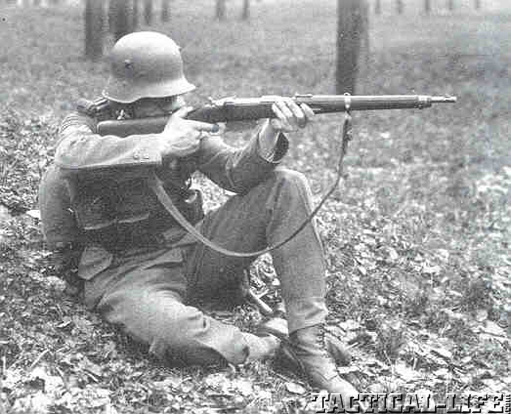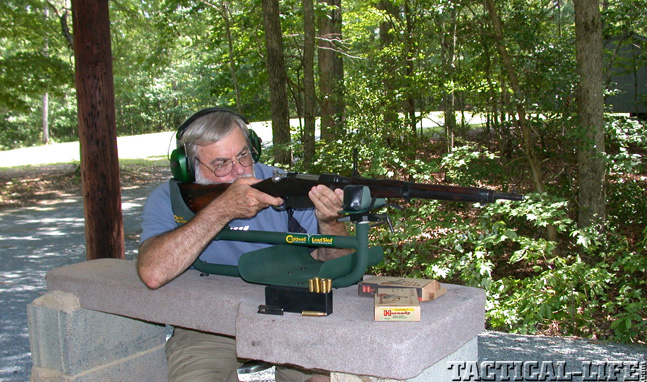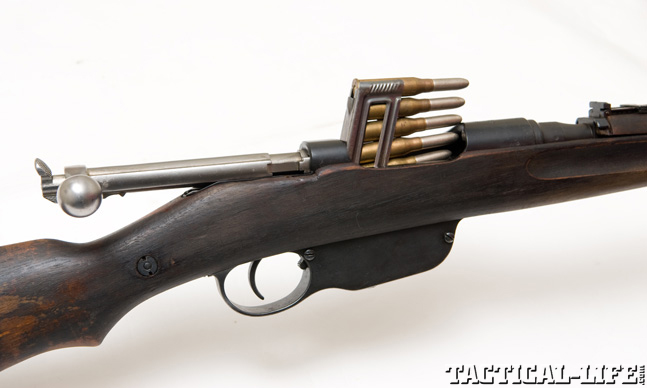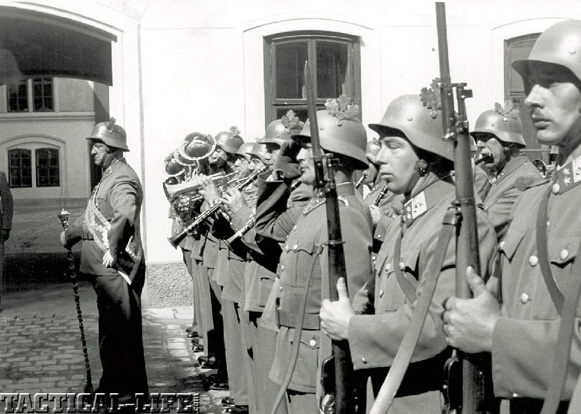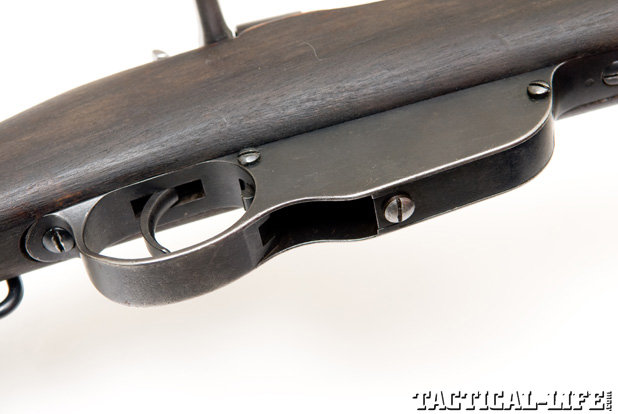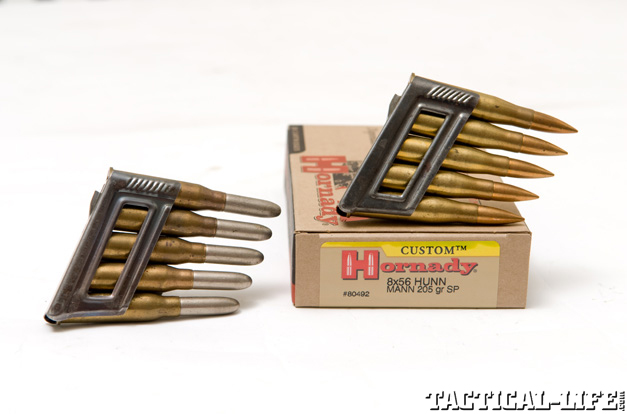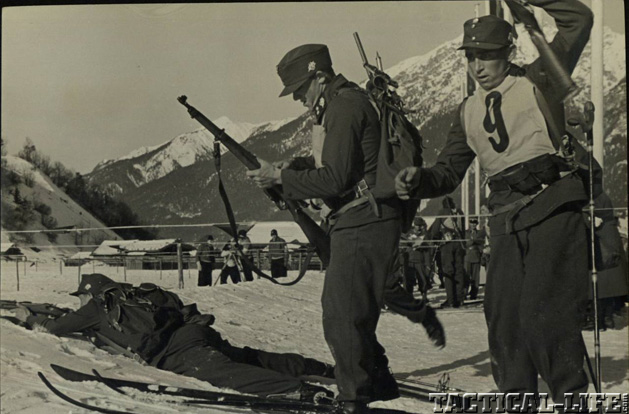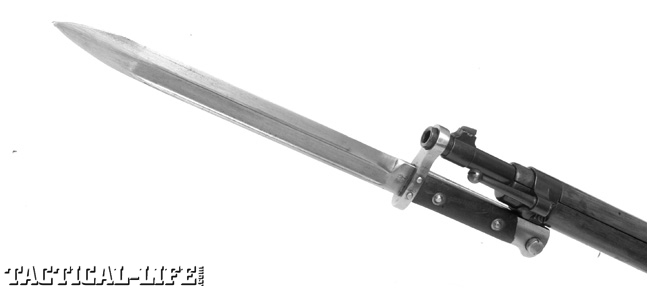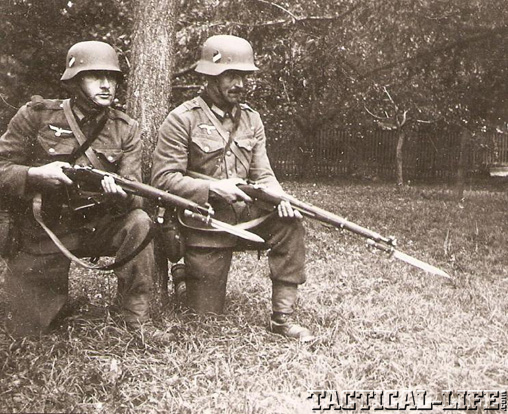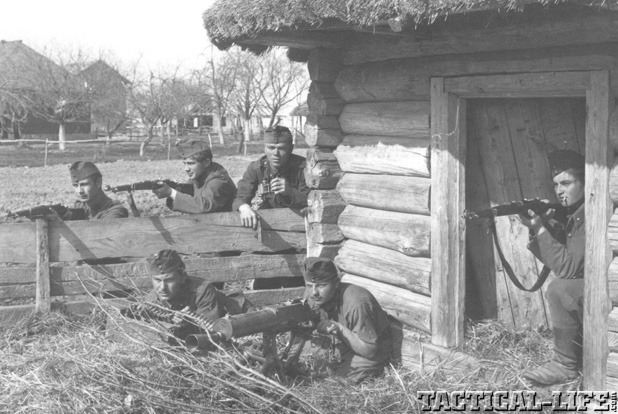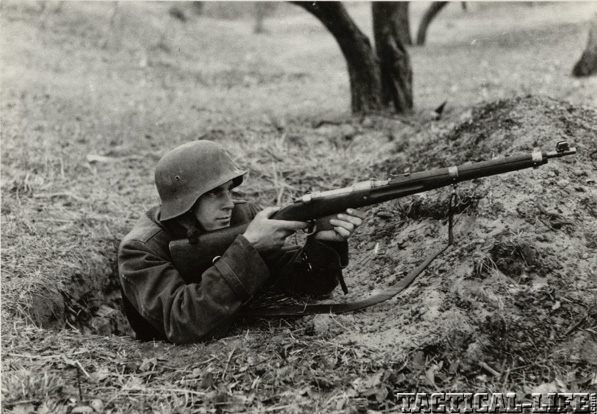The most successful series of straight-pull bolt-action military rifles in history were invented by Ferdinand von Mannlicher (1848–1904). Mannlicher had first become fascinated with firearms while visiting the 1876 World Exposition in Philadelphia. Upon returning to Austria, he devoted his engineering talents to firearms development. His work soon attracted the attention of the Hapsburg empire’s premier arms manufacturer, the Österreichische Waffenfabrik Gesellschaft of Steyr, Austria, and it was his designs that were responsible for their becoming one of the world’s leading producers of military small arms.
It has been said that many of Mannlicher’s ideas were ahead of his time and that military conservatism—along with the inability of prevailing technology to keep up with him—prevented Mannlicher from becoming as well known as his contemporaries John Moses Browning and Paul Mauser. Mannlicher is famous for his straight-pull bolt designs, which he felt provided the soldier the greatest firepower with the least amount of physical effort. But he is better known for the magazine system that even today carries his name: the Mannlicher en bloc magazine. This consisted of a magazine charged with prefilled metal clips, holding five cartridges that became part of the magazine until the cartridges were all fired. When empty, the clip fell out of an opening in the bottom of the magazine housing, allowing a loaded clip to be inserted immediately. When combined with a straight-pull bolt, it gave the individual soldier an unprecedented rate of fire. Mannlicher’s clip could only be inserted one way, and for this reason the “top” had very prominent finger grooves so that the shooter could tell which way to insert it, even in the dark. A small button in front of the triggerguard allowed the shooter to release and eject a loaded clip up through the action to unload the rifle.
1st Straight-Pull
Between 1886 and 1890, Mannlicher developed a series of straight-pull rifles that were adopted by the Austro-Hungarian Empire (a.k.a. the Dual Monarchy) and were sold to armies around the world. In 1890, Mannlicher perfected an improved, straight-pull design in which the bolt was made up of two parts: the bolt handle and body made up the rear section, and a bolt shaft, or cylinder, was inserted into the rear section’s front. On the front of the shaft were the two locking lugs and a non-rotating extractor. Helical grooves on the bolt shaft mated with two lugs on the inside of the bolt body so that, when the bolt was pulled to the rear, the lugs moved in the grooves rotating the bolt shaft, unlocking the dual lugs and allowing the bolt to open. This design was significantly stronger than his earlier rifles and was capable of handling high-pressure cartridges.
Advertisement — Continue Reading Below
The first weapon to use this new bolt action was the Österreichisches Kavellerie Repetierkarabiner M.90. The Austro-Hungarian army was so pleased with their M.90 carbines that they asked Mannlicher to design a new infantry rifle around the same action. The resulting Österreichisches Repetiergewehr M.95 would prove to be the most widely used, straight-pull military rifle of all time. The 8mm M.1893 scharfe Patrone consisted of a rimmed, bottlenecked case that was 50mm long, with a 244-grain, round-nosed FMJ bullet propelled to 2,035 feet per second (fps). In 1897 two shortened versions of the Repetiergewehr M.95 were adopted: the Österreichisches Repetierkarabiner M.95 and the Österreichisches Repetierstutzen M.95. (“Stutzen” indicates the rifle is intended for specialized troops such as artillerymen, machine-gunners and so forth. They were generally similar to carbines but often had different fittings.) Both were similar, except the Stutzen had sling swivels on the bottom and on the side of the stock and accepted a bayonet. M.95 Mannlichers were produced by both Steyr and Fegyver és Gépgyár Részvénytársaság (FGGY) in Budapest, Hungary. Weapons manufactured by the former were marked “Steyr,” while those produced in Hungary had “Budapest” stamped on the receiver ring.
M.95 At War
The M.95 series of rifles, carbines and Stutzens were the primary weapons of Austro-Hungarian troops throughout WWI and proved to be rugged, reliable weapons. After the defeat of the Central Powers and the breakup of the empire, the M.95 remained the standard rifle of both Austria and Hungary. Many ex-Austrian rifles were turned over as war reparations, and Yugoslavia (Serbia), Romania, Poland, Czechoslovakia, Albania, Greece and Italy received tens of thousands of them. In the 1930s, the Austrian Bundesheer adopted a new cartridge: the 8mm M.30 scharfe S-Patrone. Hungary followed suit a year later with the 8mm 31M. éles töltény. Both rounds used a rimmed, 56mm, bottle-necked case loaded with a 208-grain spitzer bullet that propelled at 2,395 fps. Both countries re-chambered large numbers of their M.95 rifles, Stutzens and carbines for the new cartridges. Re-chambered Austrian weapons were stamped with the letter “S” 12mm high on the chamber area, while Hungarian weapons were similarly marked with an “H.” Austria and Hungary took this opportunity to also modernize their infantry rifles, by shortening the barrels to carbine length. These modified rifles can be identified by the longer, rear-sight leaf and by a sling loop welded to the left side of the barrel band. The Austrians referred to their re-chambered weapons as Repetierkarabiner M.95/30, while those in Hungarian service were designated the Gyalogsagi Hosszú Puska 31M.
When Hitler absorbed Austria into Nazi Germany in 1938 (the “Anschluss”), most of Austria’s Mannlicher rifles were put in storage. Karabiner 98k Mausers became the standard rifle of the Austrian units in the Wehrmacht. But the demands of the war caused the Germans to reissue many Mannlichers as the 8mm Karabiner 95 (ö) to training depots, support, communications and security troops. (Mannlichers in both 8mm scharfe Patrone M.93 and 8mm S-Patrone M.30 were used during WWII, and ammunition for them was manufactured in both Germany and Austria for them.) The Italians and other German “allies” such as Hungary, Slovakia, Bulgaria and Romania used M.95 Mannlichers throughout the war years, while others saw widespread use with the various partisan armies in the Balkans and Greece. Bulgaria modified many of their Mannlichers to the M.95/30 pattern and re-chambered them for the M.30 S-Patrone, with the same “S” chamber marking as the Austrian rifles. These were known as the Karabina Mannlicher obrazetz 1895/34, while numbers of ex-Austrian rifles supplied by Bulgaria’s German allies during the war were designated the Karabina Mannlicher obrazetz 1939.
Advertisement — Continue Reading Below
But the end of WWII did not bring the end of the M.95 Mannlicher. While Austria was under Allied occupation through to 1955, it did not have an army but did maintain the Österreichische Gendarmerie and the Zollwache (border guards), both of whom were equipped with Stutzen M.95 and Karabiner M.95/30s. To supply them with ammunition, both 8mm M.93 and M.30 cartridges were manufactured by Österreichische Jagdpatronenfabrik in Kramsach, Tyrol, Austria.
M.95/30 Live Fire
Century International Arms provided me with a Steyr-made M.95/30 to test-fire for this report. It was in very good condition and had two square markings stamped into the stock near the buttplate, which indicates it was among those provided to the Bulgarian army during WWII. Hornady sent me a supply of their 8x56mm Hungarian Mannlicher ammunition for test-firing.
Accuracy testing was conducted at 75 yards from a Caldwell Lead Sled, which not only provided consistent positioning of the rifle but also helped dampen (somewhat) the rather hefty recoil produced by firing 205-grain bullets from this light carbine. Loading the rifle with Mannlicher clips proved fumble free and, in my humble opinion, much faster than Mauser’s highly vaunted charger (stripper clip) system. I proceeded to shoot for score and discovered that, with its lowest sight setting of 300 meters, at under 100 meters the carbine was printing about 12 inches high! Once I had estimated the necessary “Kentucky elevation,” the M.95/30 proved a decent-shooting little rifle, and I was able to produce a series of well-centered groups in the 3- to 4-inch range. I also ran a few rapid-fire drills, and thanks to the clip-loaded magazine, I was able to get off 15 aimed shots in a fairly short time. But the recoil—even with the Lead Sled—verged on brutal, and I freely admit to being happy once I had used up all my ammo. Ouch!
Advertisement — Continue Reading Below
All in all I found the Repetierkarabiner M.95/30 a fascinating little rifle. While the straight-pull bolt action never came close to equaling the popularity of the turn-bolt rifle, I still maintain that Herr Mannlicher’s clip-loaded magazine was probably the best of its time. No doubt, my long-suffering editor will now be inundated by a flood of letters and emails from all those enraged Mauser aficionados out there?
